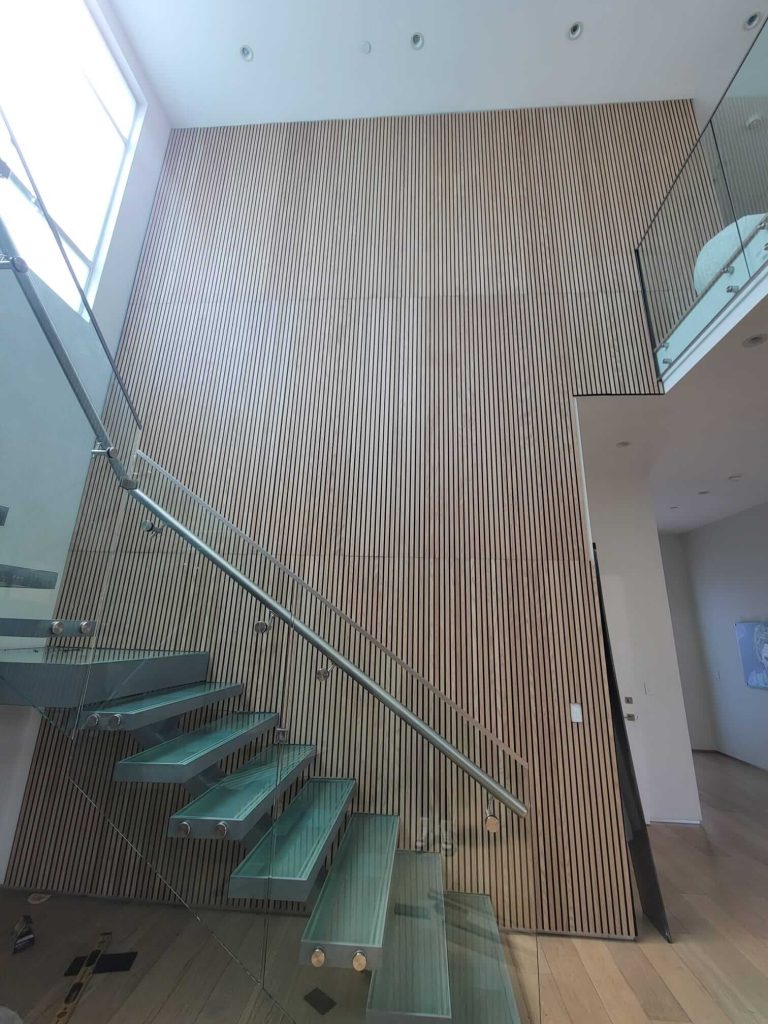Choosing the right wood type for your interior walls can make a significant difference in your home’s aesthetics, durability, and overall atmosphere. This guide will explore the best wood types for interior walls, focusing on their unique characteristics, advantages, and ideal uses to help you make an informed decision.
1. Pine: The Versatile Classic
Pine is one of the most popular choices for interior wall paneling due to its affordability and versatility.
Benefits of Pine for Interior Walls:
- Affordability: Pine is generally less expensive than other wood types, making it a budget-friendly option for many homeowners.
- Appearance: With a light color and natural grain patterns, pine provides a warm, rustic look that suits various design styles.
- Ease of Staining and Painting: Pine can be easily stained or painted to match your desired interior theme.
Best Uses:
- Rustic and Farmhouse Styles: Pine’s natural knots and imperfections enhance rustic and farmhouse aesthetics.
- DIY Projects: Its lightweight nature makes it easy to handle and install.
2. Cedar: The Fragrant Choice
Cedar is renowned for its distinct aroma and natural insect-repellent properties.
Benefits of Cedar for Interior Walls:
- Aromatic Properties: Cedar’s pleasant scent can refresh and invigorate interior spaces.
- Natural Durability: This wood type is highly resistant to decay and moisture.
- Distinct Look: Cedar has a unique reddish-brown hue with straight grains, adding character to any room.
Best Uses:
- Bedrooms and Closets: The fragrance keeps spaces fresh and repels moths.
- Accent Walls: Cedar’s distinct color makes it a great choice for accent walls that pop.
3. Oak: The Timeless Option
Oak is synonymous with strength and durability, making it a prime candidate for high-traffic areas.
Benefits of Oak for Interior Walls:
- Exceptional Durability: Oak can withstand daily wear and tear, making it ideal for busy households.
- Rich Appearance: Oak has a prominent grain pattern that lends a luxurious and timeless look.
- Staining Versatility: It can be stained in various shades to complement diverse interior styles.
Best Uses:
- Living Rooms and Dining Areas: Oak’s sturdiness and elegance make it perfect for common spaces.
- Office Spaces: Its professional and polished appearance enhances work environments.
4. Walnut: The Premium Choice
For those looking to add sophistication and depth, walnut is a top-tier option.
Benefits of Walnut for Interior Walls:
- Luxurious Appearance: Walnut’s deep, rich brown color creates an upscale, inviting ambiance.
- Natural Hardness: It is durable and can handle moderate wear without issue.
- Distinctive Grain: Walnut’s grain patterns are unique, adding character and depth.
Best Uses:
- Formal Areas: Walnut is ideal for spaces like libraries, offices, and formal living rooms.
- Feature Walls: Its rich tones make it perfect for eye-catching statement walls.
5. Maple: The Modern Minimalist’s Pick
Maple is known for its clean, uniform appearance, making it ideal for modern interior design.
Benefits of Maple for Interior Walls:
- Smooth, Light Finish: Maple’s light color and minimal grain fit well with contemporary and minimalist designs.
- Hard and Durable: It’s a hardwood that resists scratches and dents effectively.
- Easy to Maintain: Maple’s dense composition makes it less prone to warping and requires minimal upkeep.
Best Uses:
- Modern and Contemporary Homes: Its clean lines and light hue suit modern spaces.
- Kitchens and Bathrooms: Due to its hardness, maple can withstand humid environments better than softer woods.
Comparison of Wood Types for Interior Walls
| Wood Type | Key Benefits | Ideal Uses | Price Range |
|---|---|---|---|
| Pine | Affordable, easy to paint | Rustic styles, DIY | Low |
| Cedar | Fragrant, durable | Bedrooms, closets | Moderate |
| Oak | Durable, rich grain | Living rooms, offices | High |
| Walnut | Luxurious, unique grain | Formal spaces, feature walls | Very High |
| Maple | Light, modern, durable | Kitchens, modern spaces | High |
6. Mahogany: The Exotic Choice
Mahogany is known for its rich, reddish-brown color and exceptional durability.
Benefits of Mahogany for Interior Walls:
- High-End Look: Mahogany’s deep tones convey luxury and sophistication.
- Longevity: This hardwood can last for decades with minimal maintenance.
- Stability: Mahogany resists warping, making it ideal for humid climates.
Best Uses:
- High-Traffic Areas: It’s perfect for hallways and entryways where durability is key.
- Accent Panels: Adds an elegant touch to any room.
FAQs: Common Questions About Wood Types for Interior Walls
-
What is the best wood type for a budget-friendly interior wall?
Pine is an excellent option for those on a budget, offering affordability and versatility.
-
Which wood type works best for humid environments?
Cedar and maple are great choices for humid areas due to their natural resistance to moisture.
-
How can I maintain the wood panels on my interior walls?
Regular dusting and using a wood-friendly cleaner can help maintain the appearance of your wood walls.
-
What wood type is ideal for creating a modern look?
Maple’s light color and uniform grain make it perfect for modern, minimalist interiors.
-
Can I paint or stain all wood types for my interior walls?
Yes, most wood types can be stained or painted, but pine and oak are particularly adaptable for customization.
By understanding the benefits and ideal applications of different wood types, you can choose the best option to elevate your interior spaces with style and functionality.








